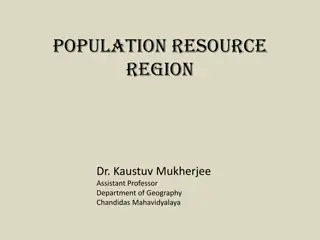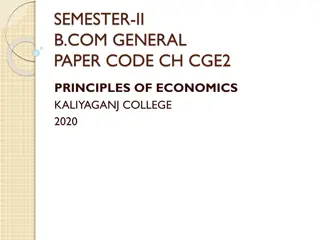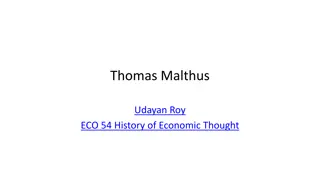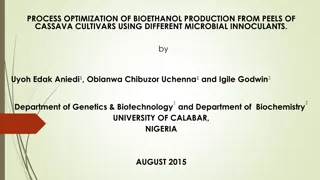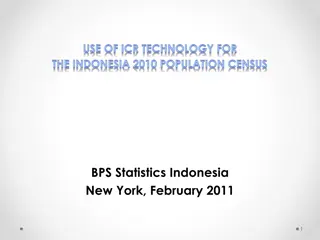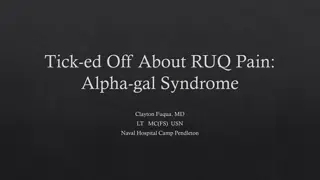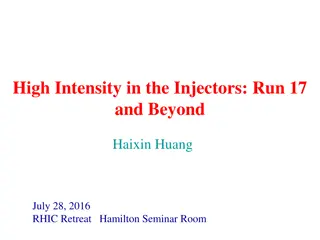Demystifying AGS: A Guide to Production, Population, and Processing
Discover everything you need to know about AGS acronyms, production, population, and processing. Learn about AGS rounds, survey population best practices, form and ID production, processing procedures, and return dates. Start your journey with the AGS website today!
Download Presentation

Please find below an Image/Link to download the presentation.
The content on the website is provided AS IS for your information and personal use only. It may not be sold, licensed, or shared on other websites without obtaining consent from the author. Download presentation by click this link. If you encounter any issues during the download, it is possible that the publisher has removed the file from their server.
E N D
Presentation Transcript
or: Everything You Need to Know But Were Too Afraid to Ask!
About the AGS Acronyms Production and Population AGS Rounds Survey Population Survey Population Do s and Don ts Form and id Production oAGS ids Processing Processing Procedure Return Dates START website 1. 2. 3. 4. 5.
Census survey Every graduate is sent a survey Reference dates 4 months after course completion Graduate and Research surveys Graduate is green Research is purple/pink 4 surveys in total every year
AGS Australian Graduate Survey GDS Graduate Destinations Survey CEQ Course Experience Questionnaire PREQ Postgraduate Research Experience Questionnaire
2 rounds every survey Financial year Round 1 October (mid year completions) Reference date: October 31 Commencement date: October 1 Round 2 April (end of year completions) Reference date: April 30 Commencement date: April 1
Round 1 (October) Includes all students who completed course between January 1 and June 30 Round 2 (April) Includes all students who completed course between July 1 and December 31 PREQ Includes all students who complete a research-based higher degree (master degree by research/doctorate by research)
DO include Students continuing to honours Students completing assoc degrees or diplomas Domestic or internationals who are situated offshore but studied at an Australian campus via distance education DON T include Offshore students: people who studied at a campus outside Australia Deceased students (this one is rare!)
GCA sends order form for hard-copy forms and IDs SM returns order to GCA GCA creates the artwork for the hard-copy forms GCA sends proof work to SM for checking SM approves forms GCA signs off on art work GCA sends printed forms or PDF artwork to SM 1. 2. 3. 4. 5. 6. 7.
oAGS = online AGS provided by GCA oAGS IDs: CEQ IDs = (GDS + CEQ) PREQ IDs = (GDS + PREQ) oCEQ = online CEQ/PREQ provided by GCA oCEQ IDs: oCEQ IDs = (CEQ only) oPREQ IDs = (PREQ only)
Collate returned hard-copy forms Download oAGS responses Code all responses Scan or data enter all responses Finalise data file for return to GCA GCA process and finalise data file Data file checked by SM National data file compiled 1. 2. 3. 24601 4. 5. 6. 7. 8.
Collate returned hard-copy forms Return forms to GCA GCA download AGS responses GCA code all responses GCA scan all responses GCA process and finalise data file Data file checked by SM National data file compiled 1. 2. 3. 24601 4. 5. 6. 7. 8.
Uncoded or partly coded forms Friday 3 September, 2010 Completely coded forms Friday 10 September, 2010 Completed data file Friday 17 September, 2010
Survey Training And Resources Tool Available to all Survey Managers URL: http://start.graduatecareers.com.au/ New Survey Managers section for further information
Survey Manager Information Forums Held annually Part of a wider communications strategy Central in 2011? Executive Director position advertised Applications close 30 June End August start? Housekeeping
Deakin University, Geelong, Victoria November 10 12 Has institutional research come of age in Australasia? the equity agenda in higher education, 2010 and beyond supporting models for academic standards improving participation and retention of students improving TAFE pathways and partnerships
AGS General Issues Morning Tea AGS GCA Practices Lunch AGS Projects Afternoon Tea General Q&A Wrap-Up
In abeyance, pending Cost reduction (bells and whistles) Policy decisions (use) Funding availability Until then, current oAGS will be supported Institutions with their own online instrument can continue to use it
Code of Practice Review: Review Committee Wide consultation 11 drafts UA Plenary in Sydney Activation 1 June, 2010 Sent to all Survey Managers Applies to data released after 1 June, 2010
GCA now sole owner Relates to raw data and survey results The 50% response rate limit now applies to GDS and CEQ data Some users have been exempted from the 50% response rate limitation Expands on processes for dealing with departures Code will be reviewed every three years A Post-Survey Operations Checklist (Post-SOC) will record how institutions collected their data
AGS Report Plans for an annual report on the conduct of the AGS Early in the year following the survey Response rates Survey Methods Reporting Methods Code of Practice issues Post-Survey Operations Checklist (Post-SOC) Report to be completed by SMs on AGS methods Publication in AGS Report
Online Responses Variables: AGS instruments used Distribution, follow-ups Paper, online, phone Incentives Processing, coding Comments from institutions Standardised Model & CoP Focus Published in AGS Report
GCA Practices Pre- and Post-Population update AGS Form Redesign Telephone Instrument Overview
Pre-population: adding known respondent information to questions on the AGS instrument: Post-population: removing certain questions from the AGS instrument and populating variables in the final data file. The crucial difference? Pre-population gives respondents the opportunity to change the institution-supplied response.
Avoid respondent frustration caused by double-asking certain factual questions (e.g. age, sex, degree). Increase response rates by having a shorter, less cluttered survey form. Reduce respondent fatigue.
2010 AGS: First implementation phase: Pre- and post-population both optional, but.. Only on GCA hardcopy (not GCA oAGS) or You can use your own online AGS (if applicable) 2011 AGS: Final implementation phase: Pre-population will remain optional Post-population questions removed from all GCA forms Hardcopy form Proposed new online AGS form - delayed oAGS
Pre-population: adding known respondent information to questions on the AGS instrument: Pre-filling fields in an online AGS instrument Overprinting (or pre-printing) responses on a hardcopy AGS instrument. Graduates will have the opportunity to change pre- populated response if they do not agree with it. Variables to be pre-populated are: Title of Award Major Field of Education (MAJ1 MAJ4).
Removing questions asking known factual information from the AGS instrument. Populating these variables in the final AGS data file
Post-population variables: Level of award Year commenced study Double/combined degree Respondent age Respondent sex ATSI status NESB status Born in Australia Year arrived in Australia
Removal of post- populated questions Addition of work in final year of study section from p.3 Revision of Title of Award and Major Field of Education question text
Looking at April 2010 26 institutions used or are using the new form (52%) Of these, 8 printed their own (30%) All are post-populating Of the 26: 20 pre-populated (76%). That s 40% overall. Of these: 3 pre-populated (overprinted) with GCA 17 pre-populated (overprinted) themselves Any feedback from these institutions?
For the 26 institutions that are post-populating: Data to be mined from Past Course Completions Files (PCCF) Enrolment files Concordance developed (UniSA) to ensure data harmony across all institutions post population data files. Available from START Data to be formatted prior to submission Excel shell file created for post-pop submission
Institutions that: Return a data file to GCA will need to add the post-pop data to this file OR submit their post-pop data in a separate file to the AGS file, but at the same time Return their survey forms to GCA will need to: Return their post-pop data file to GCA with their forms
Hardcopy Revised hardcopy AGS form only. Post-population variables removed START has a manual on pre and post-population Support from GCA o Use the forum / other resources Online The oAGS Post-population variables removed No pre-population of two fields optional You can continue to use your own online AGS (if applicable)
Internal review of GCA design and scan processes Why are we changing? What are we changing? Suggestions and Q&A regarding change
Cardiff TeleForm Consultant - Canon Australia VersiForm is this the best form type? Are our scanning processes optimised?
Fresh up to date design Updating the feel of the form with our designer TeleForm parameters Borders Fonts Colours TeleForm back end VersiForm Data Output









